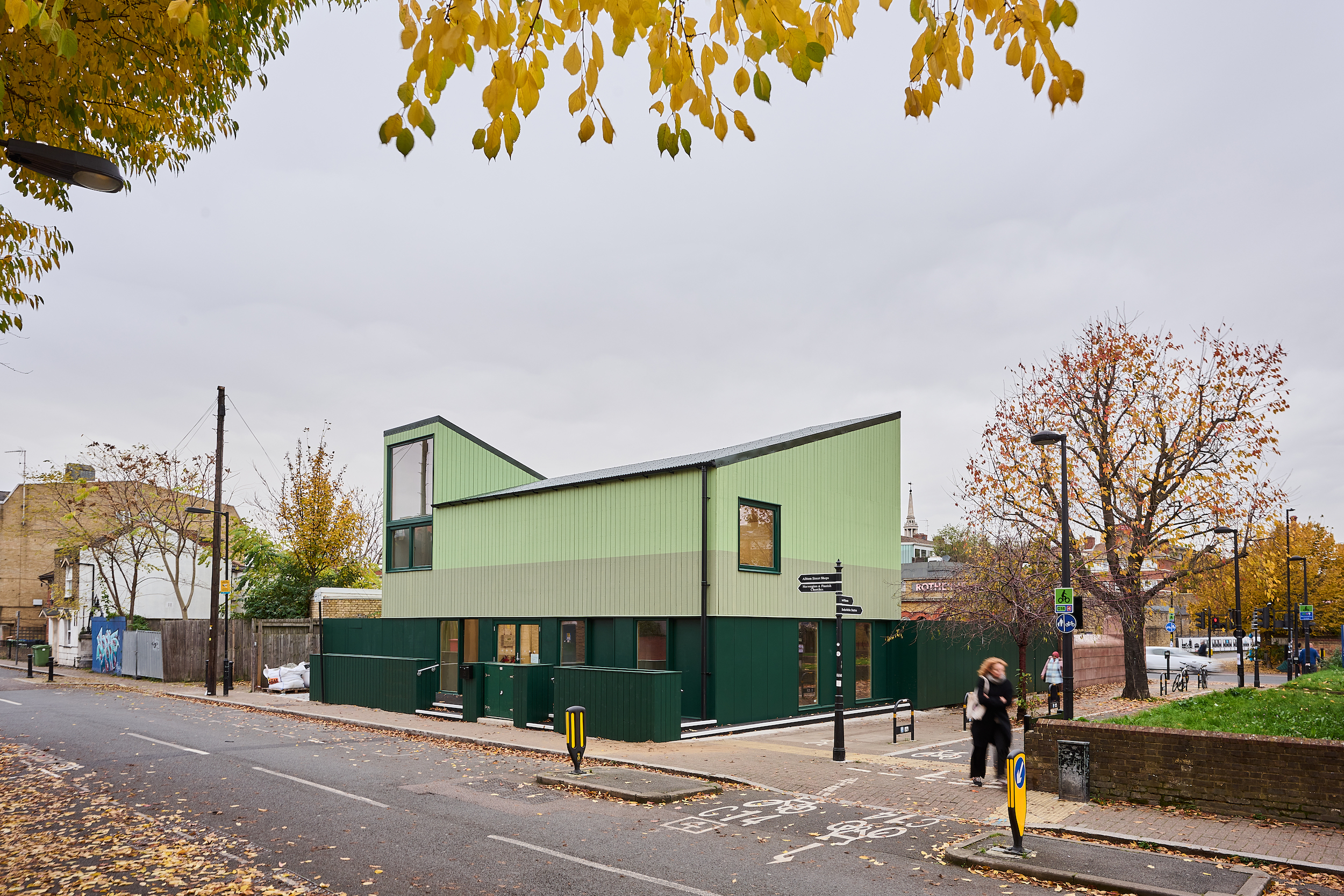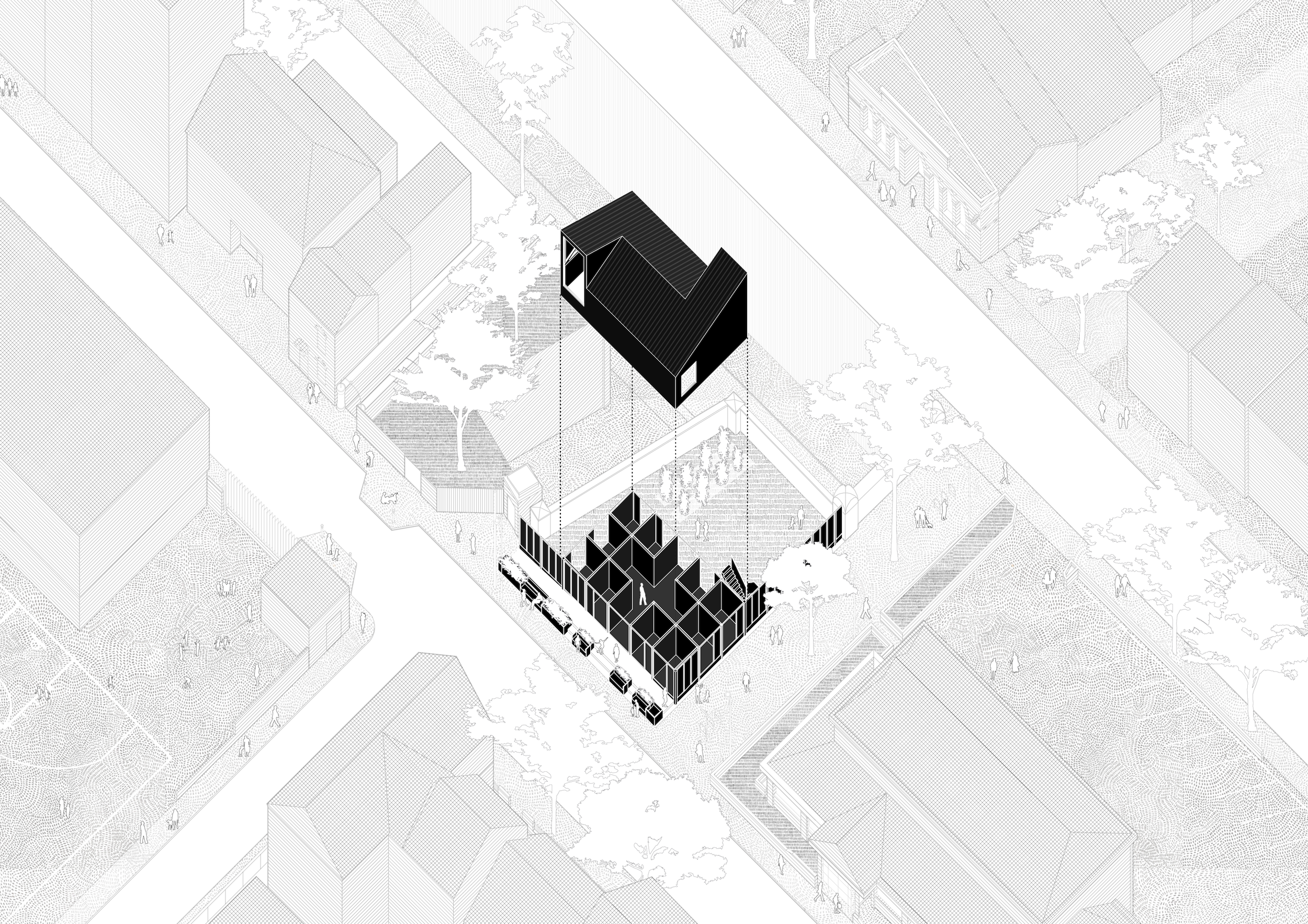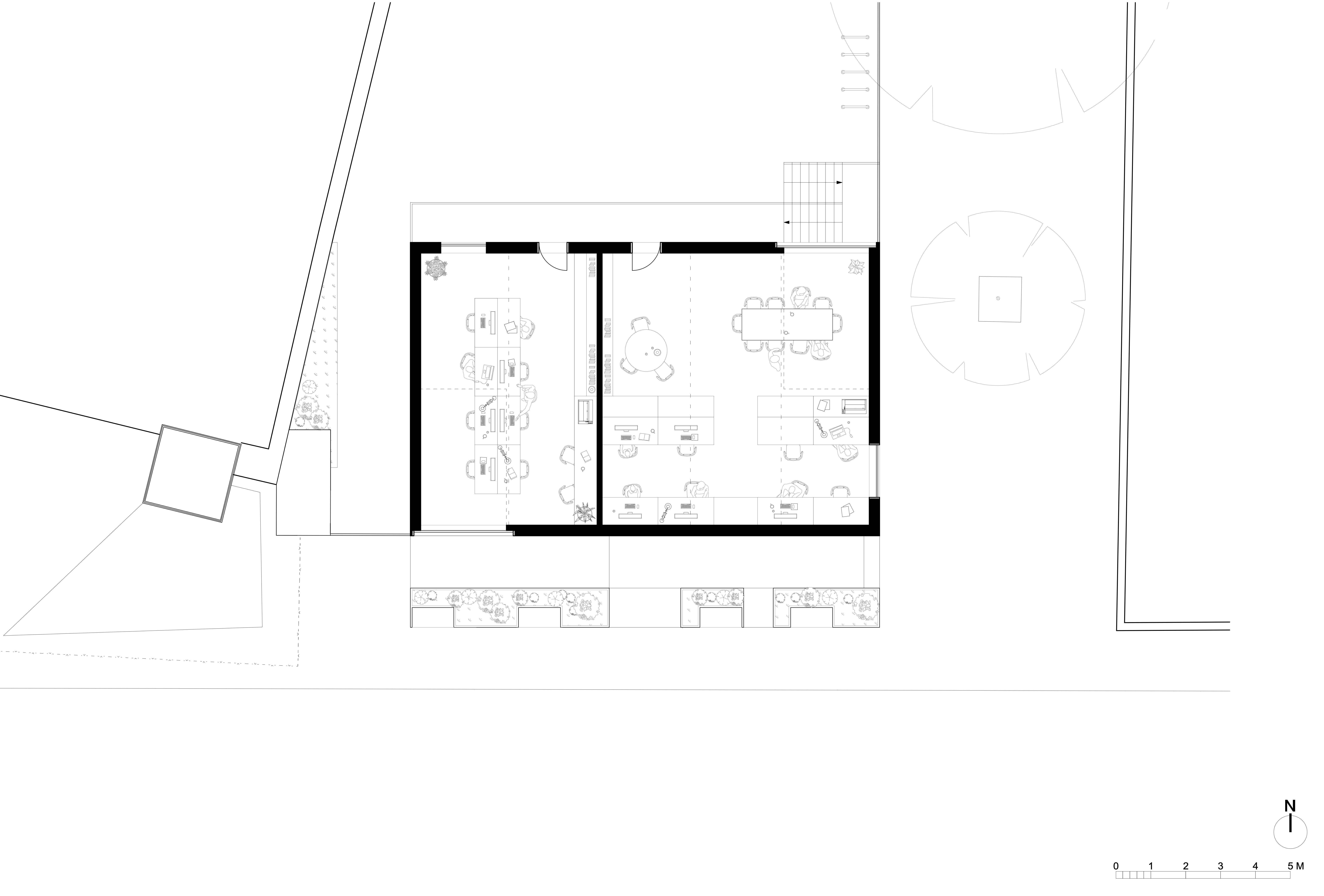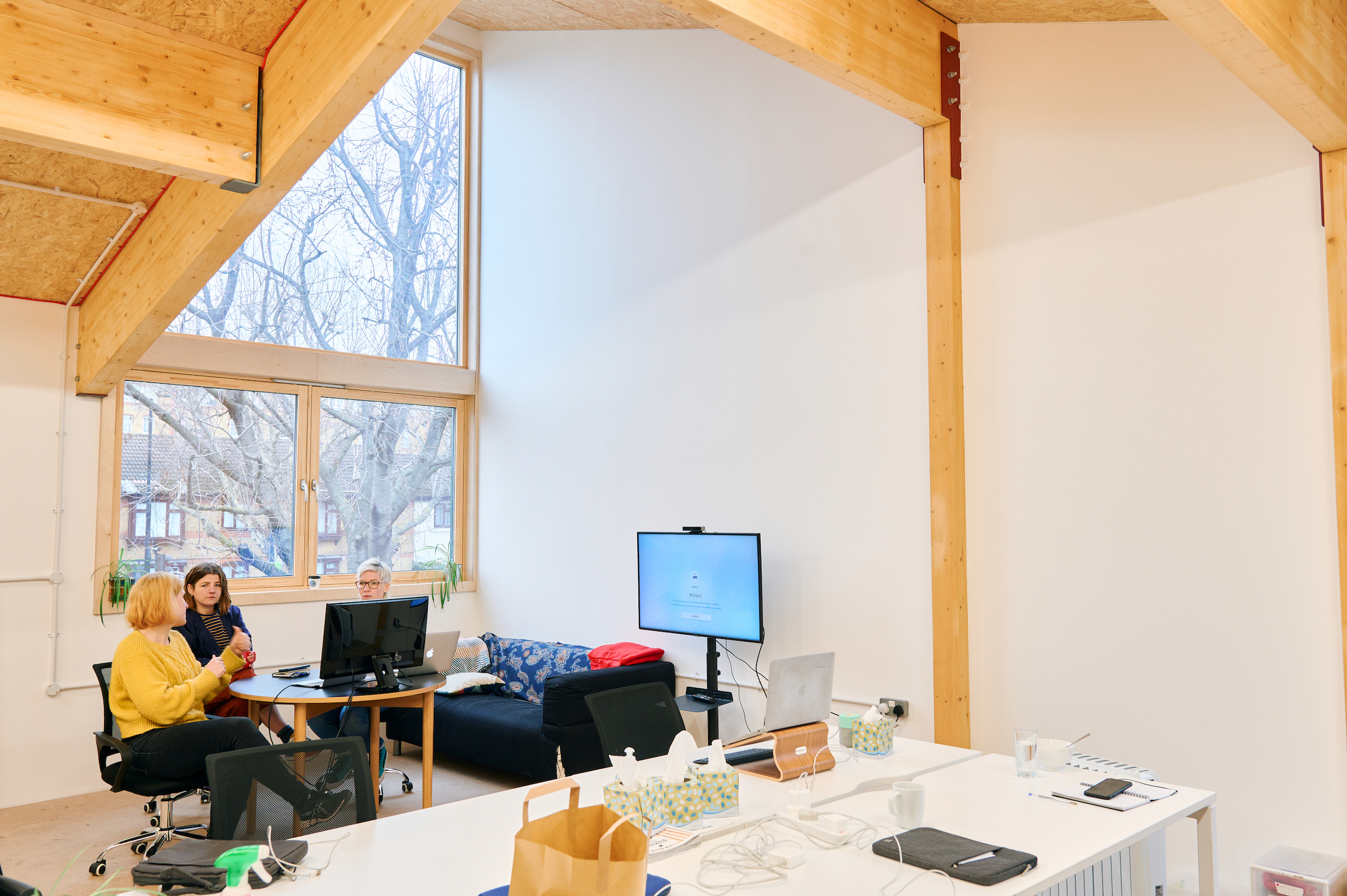Rotherhithe is a peninsula district located 4.5 kilometers east of central London. The district is directly adjacent to the 53-acre Canada Water, a four-billion-British pound (US$4.8 billion) mixed-use redevelopment that, when completed, will create a new town center with 3,000 homes, two million sf of office space, one million sf of retail/leisure/entertainment/community spaces, and 12 acres of new public space. The 35 to 40 buildings at Canada Water will be net-zero energy by 2030. Phase one of this project is scheduled for completion in the third quarter of 2024.
Canada Water and Rotherhithe are within the borough of Southwark, whose Council commissioned the architecture firm IF_DO to design The Hithe, a 200-sm (2,153-sf) building on what had been a vacant 283-sm lot in Rotherhithe, that provides 12 units of business incubator workspace for startups.
The key to this building is that it can be disassembled and relocated relatively easily and as needed. The Hithe was completed at a construction cost of 400,000 pounds in late 2021, and started accepting tenants in early 2022.
IF_DO designed The Hithe (whose name harkens back to the Old English term for a landing place or small port) in collaboration with the social enterprise Meanwhile Space, which is also leasing the largest unit in the building; the general contractor and fabricator Weber Industries; and the structural engineer Elliott Wood Partnership. The Council identified the “meanwhile” use of The Hithe as up to 11 years, at which point it is likely to be taken down and reassembled in another location as the district’s redevelopment evolves.

IF_DO refers to The Hithe as “social infrastructure,” and contends that it acts as a “hinge” between the existing community and the new developments around it.
Eddie Bridgeman, Meanwhile Space’s Executive Director, explains that shipping containers—previously a “go-to” option for temporary buildings—would have been the wrong aesthetic choice for the Rotherhithe project. “To re-use the building again and again, maintain a quality structure and look that could be tweaked for different locations, we needed an alternative.”
Thomas Bryans, RIBA, IF_DO’s Director, adds that the community wanted a building that didn’t look temporary. “We have had conversations with Meanwhile Space for a while about the potential of relocatable micro work units, and The Hithe was the perfect opportunity to start testing some of those ideas.”
Indeed, prior to its involvement in The Hithe, If_DO had designed for Meanwhile Space a 350-sm short-term refurbishment on Lower Marsh, Waterloo, called Granby Space, which closed after five years. The Hithe, states IF_DO, “represents a departure for Meanwhile Space,” its first full-blown venture into circularity, the concept of reusing redundant space and materials more productively and to lower a building’s carbon footprint and waste.
Bryans tells BD+C that his firm is “constantly investigating” circularity. He points specifically to a recent project IF_DO designed for U.K. property developer Related Argent that wrapped an electrical substation at Brent Cross Town in North West London with a massive kaleidoscopic piece of public art made mostly of piping from the oil industry.
For The Hithe, IF_DO consulted Circular Construction in Regenerative Cities (CIRCuIT), particularly during the project’s technical design stage. One of CIRCuIT’s “key inputs,” says Bryans, was factoring the life cycle and carbon analysis costs into the impact of designing for disassembly and reuse, compared to more traditional forms of construction.

The Hithe was constructed using lightweight steel and timber framing. Bryans says almost all of the building’s components were prefabricated in Weber Industries’ workshop near the jobsite. The ground floor of the building was designed as volumetric modules to make their future relocation easier, and the first floor with panelized glulam framing and structural insulated panels (SIPs) that were built onto existing foundations, remnants of three houses that had been demolished many years earlier.
Inside The Hithe, the timber structure and services are exposed. Its studios are arranged around a ground-floor gathering space that is linked to a kitchen and a yard to the north of the site that has been transformed into a planted outdoor social space. Two larger workspaces are located on the first floor. And all the units are accessed externally, thereby reducing the need for circulation corridors.
“Our vision for a fully demountable building that acts as a beacon for Albion Street has come to life,” says Helen Dennis, Southwark Council’s cabinet member for climate emergency and sustainable development. “This sustainable hub can be redeployed to sites across the borough, meaning in term other areas can reap similar economic and social rewards.”

Related Stories
Urban Planning | Apr 12, 2023
Watch: Trends in urban design for 2023, with James Corner Field Operations
Isabel Castilla, a Principal Designer with the landscape architecture firm James Corner Field Operations, discusses recent changes in clients' priorities about urban design, with a focus on her firm's recent projects.
Cladding and Facade Systems | Apr 5, 2023
Façade innovation: University of Stuttgart tests a ‘saturated building skin’ for lessening heat islands
HydroSKIN is a façade made with textiles that stores rainwater and uses it later to cool hot building exteriors. The façade innovation consists of an external, multilayered 3D textile that acts as a water collector and evaporator.
Giants 400 | Nov 14, 2022
4 emerging trends from BD+C's 2022 Giants 400 Report
Regenerative design, cognitive health, and jobsite robotics highlight the top trends from the 519 design and construction firms that participated in BD+C's 2022 Giants 400 Report.
Urban Planning | Jul 28, 2022
A former military base becomes a substation with public amenities
On the site of a former military base in the Hunters Point neighborhood of San Francisco, a new three-story substation will house critical electrical infrastructure to replace an existing substation across the street.
Smart Buildings | Jun 1, 2022
Taking full advantage of smart building technology
Drew Deatherage of Crux Solutions discusses where owners and AEC firms could do better at optimizing smart technology in building design and operations.
Market Data | Apr 20, 2022
Pace of demand for design services rapidly accelerates
Demand for design services in March expanded sharply from February according to a new report today from The American Institute of Architects (AIA).
Healthcare Facilities | Apr 14, 2022
Healthcare construction veteran creates next-level IPD process for hospital projects
Can integrated project delivery work without incentives for building team members? Denton Wilson thinks so.
Wood | Apr 13, 2022
Mass timber: Multifamily’s next big building system
Mass timber construction experts offer advice on how to use prefabricated wood systems to help you reach for the heights with your next apartment or condominium project.
Designers / Specifiers / Landscape Architects | Nov 16, 2021
‘Desire paths’ and college campus design
If a campus is not as efficient as it could be, end users will use their feet to let designers know about it.
K-12 Schools | Nov 10, 2021
K-12 school design innovation: 'Learning Everywhere' and the mobile classroom
Last September, AIA San Francisco awarded the Professional Category in its 2021 Future Classroom Competition to a five-person team from Culver City, Calif.-based Berliner Architects. The firm was selected for its “Learning Everywhere” idea that features a mobile strategy for education at school, home, on field trips, and in transit. BD+C's John Caulfield discuss that concept with Richard Berliner, AIA, Principal, Berliner Architects.

















